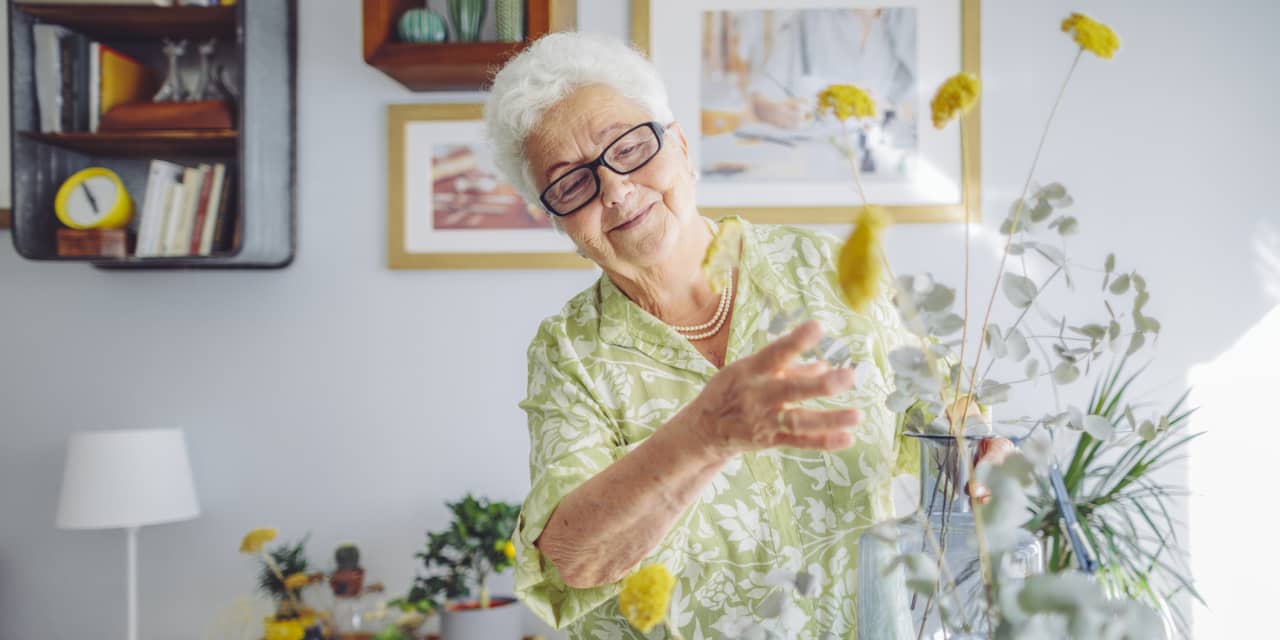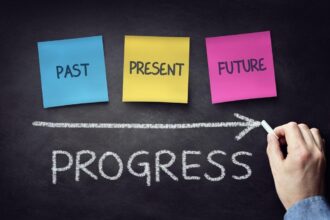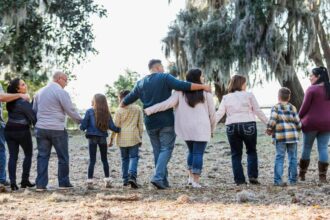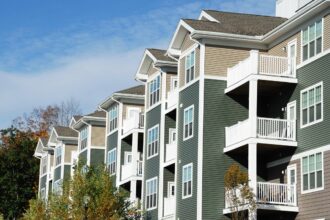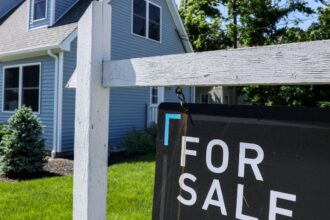Long-term care costs, social isolation, dementia and financial insecurity are all notable problems facing many older Americans. But perhaps their biggest challenge of all is housing.
As more than two dozen experts explained at “Raising the Roof: America’s Housing Crisis and Our Longer Lives,” the Columbia University Age Boom Academy program for journalists (where I served as a panel moderator and mentor), a tormenting triad has created an untenable situation.
Call these problems the 3 A’s: affordability, accessibility and the ability to remain in your own home.
Better housing, better health
“Our society is at a critical juncture in planning for an aging population while confronting one of the worst housing crises in our lifetimes,” said Dr. Linda Fried, director of the Age Boom Academy and dean of the Columbia University Mailman School of Public Health.
Caitlin Hawke, Age Boom’s project lead, said the 2023 version of the academy focused on housing as a determinant for health in aging. “The more we learned, the more we realized what a dearth of affordable options there are for older people to remain in their communities as they age,” she noted.
Fortunately, the Age Boom panelists said, a few novel programs and housing communities — from nonprofits, real estate developers and the federal government — are helping address housing problems facing older Americans.
Here’s a look at the key housing challenges and what’s being done to reduce them:
Affordability
“The precarious state that many older people live in could be addressed by getting a handle on the cost of housing,” said gerontologist Jan Mutchler, creator of The Elder Index measure of what it costs older adults to stay in their homes and remain independent.
Roughly one-third of people aged 50 and over pay more than 30% of their incomes for housing — making them “rent burdened” according to the federal Department of Housing and Urban Development (HUD).
The high cost of houses and apartments in many places is a leading reason why older adults are now the fastest growing group of homeless Americans, according to the Joint Center for Housing Studies at Harvard University.
Elder homelessness rates haven’t been this high since the Great Depression. One in three people experiencing chronic homelessness in 2020 were 55 or older, according to HUD. Chronic homelessness means living without a home for at least 12 months or having four episodes of homelessness adding up to 12 months over three years.
“The story of homelessness is a story of affordable housing,” said Mutchler.
Jonathan Rose, whose Jonathan Rose Companies builds and buys affordable, green housing, noted that only 50,000 new units of affordable housing are built in the U.S. annually. They exist due to small federal subsidies Congress has authorized.
The overlooked lower middle class
“Affordable housing can only be built with subsidies,” said Rose. “As much as I hope that we’ll develop the financial resources to solve these issues [of affordability], looking at Congress today, I don’t think it’s going to be likely.”
Dr. Jack Rowe, a faculty member at the Robert N. Butler Columbia Aging Center, said at Age Boom that he’s especially concerned about housing affordability for the older Americans he calls “the forgotten middle” — the lower half of the middle class. They are not eligible for low-income housing and often can’t afford market-rate rents or home ownership. “They’re faring much less well than their predecessors 20 years ago,” said Rowe.
The demand by older adults for affordable housing is enormous.
Wayne Ho, president and CEO of the Chinese-American Planning Council, said that when his group opened a senior affordable housing building in New York City’s Chinatown last year, it received 22,000 applications for 110 units.
Big idea: small houses
Two reasons affordable housing is in such short supply: builders see bigger profits by going upscale and local zoning ordinances often prohibit low-income construction.
“The problem with housing is that in many communities, there really aren’t affordable and reasonable downsizing options that would let people stay in their community,” said Mutchler.
But a small and growing number of communities — especially on the West Coast — are now allowing Accessory Dwelling Units (ADUs) to help counter high housing costs. ADUs are typically small houses built in the backyard of existing houses, though they can be modified apartments and townhouses.
At Age Boom, Rodney Harrell, vice president for family, home and community at the AARP Public Policy Institute, called ADUs the “Swiss army knife of housing” because they are affordable and often one-story, so residents needn’t worry about climbing stairs.
A Joint Center for Housing Studies report noted that before statewide ADU legislation passed in California in 2016, localities there issued about 1,200 ADU permits annually. In 2022, that number rose to over 24,000.
The Biden administration’s 2022 Housing Supply Action Plan called for more ADUs nationwide, especially for low- and moderate-income people, with pilot programs for federal ADU loans.
Plus: 3 reasons why millions of older Americans live in poverty and aren’t getting the help they need
Accessibility
Fewer than 4% of U.S. homes are fully accessible and adhere to the principles of universal design, Federal Housing Administration (FHA) Commissioner Julia Gordon said at the recent Stanford Center on Longevity 2023 Century Summit.
The U.S. Census Bureau says in 28% of households with an adult aged 65 and over are in houses that are difficult for older adults to use. For example they may have trouble climbing stairs, getting into the bathtub or using the kitchen.
As a result, even though surveys show most people want to age in place, their homes won’t let them — at least not without costly renovations, if they are even possible.
Making homes accessible not only keeps older residents safe, it often has other benefits.
“When we go into homes and do major repair work, we see measurable improvements to the health of the older adult resident,” said Tawkiyah Jordan, vice president for housing and community strategy at Habitat for Humanity International, at Age Boom. “We also hear from them self-reported improvements in their sense of well-being, and a significant decrease in depression.”
Also see: A new senior-housing project will tackle the ‘middle ground’ between living alone and needing a nursing home
Ability to remain in your own home
Now that pandemic moratoriums on evictions and foreclosures have been lifted, experts at Age Boom said, there are growing fears of older adults being forced out of their homes by predatory landlords and lenders.
Roughly 200,000 renters over age 65 receive an eviction filing every year; about half of them are later evicted, Nick Graetz, a research associate at The Eviction Lab at Princeton University, said at Age Boom.
One especially pernicious problem pushing older people out of their homes is known as “a tangled title.” That is when someone loses ownership or cannot transfer the home to the next generation because they lack the proper title to it.
“The Pew Charitable Trusts did an interesting study out of Philadelphia that noted there’s $1.1 billion of wealth at stake to be lost due to tangled title issues, the majority of which is Black wealth,” Lily Hoffman, Habitat for Humanity International associate director of programs, said at Age Boom.
The Economic Hardship Reporting Project‘s new book of essays about financial precarity, “Going for Broke: Living on the Edge in the World’s Richest Country,” has a sad story about a woman whose tangled title caused her to lose her Detroit home.
“People often assume it’s young people who are struggling to make ends meet,” said Alissa Quart, the project’s executive director and book’s co-editor. “It turns out, a lot of our grant recipients experiencing financial hardship are older.”
Related: ‘A terrific value for the rent dollar’: For retirees and empty nesters, these trendy housing options offer many benefits
What works to fix these concerns
Age Boom panelists described six novel ways affordable or accessible housing is being created around the nation:
Bridge Meadows: Oregon’s three Bridge Meadows multigenerational, affordable housing developments feature universal design and on-site mental health specialists. They’re comprised of apartments with low-income renters who are 55+ and townhouses for families adopting or fostering youth. “You might not recognize that it’s affordable housing,” said Derenda Schubert, the nonprofit’s executive director.
CAPABLE: This Johns Hopkins School of Nursing program (full name: Community Aging in Place-Advancing Better Living for Elders) brings together an occupational therapist, a registered nurse and a handy worker to make a low-income older adult’s home safer and keep them healthier. It has also reduced their need for hospitalization and nursing home stays. CAPABLE is now in 23 states.
Colma Veterans Village: Working with the Veterans Administration and low-income housing developer Mercy Housing, geriatrician Dr. Anne Fabiny created this apartment complex in Colma, California, with health care for chronically homeless, frail and medically or psychosocially complex older veterans. Residents — primarily Vietnam vets — pay no more than 30% of their income for housing. The 65-unit complex has primary and mental health care teams on site as well as occupational and recreational therapy. The Veterans Administration is extending the Colma model nationwide.
Habitat for Humanity: Although this nonprofit is best known for building houses, it also repairs and restores them to help inhabitants age in place. Through rezoning, Habitat for Humanity is rebuilding some older adults’ homes in Tacoma, Washington. to create a multigenerational, affordable housing development with shared living spaces.
Section 202 Housing: HUD’s Supportive Housing for the Elderly program, which is based on Section 202 of the Housing Act of 1959, provides loans to build, buy or rehab apartments for people aged 62 or older earning less than 50% of the area median income. Its rent subsidies help make the apartments affordable. “Section 202 was dormant for several years and then revived,” Linda Couch, vice president, housing and aging services policy at the LeadingAge nonprofit, said at Age Boom. “It’s HUD’s flagship older-adult housing program and brings consistent, stable affordability to tenants.”
The Gale Eckington Project: After Amazon
AMZN,
committed to preserve housing affordability in Washington, D.C., for its employees there, the Jonathan Rose Companies bought the 603-unit Gale Eckington apartment building with a low-cost loan from the powerhouse retailer. Half its units will be rented to residents earning 80% or less of the local median income. “We were able to create 300 new units of affordable housing simply by changing the regulatory environment on a very nice building,” said Rose.
Richard Eisenberg is the former senior web editor of the Money & Security and Work & Purpose channels of Next Avenue and former managing editor for the site. He is the author of “How to Avoid a Mid-Life Financial Crisis” and has been a personal finance editor at Money, Yahoo, Good Housekeeping, and CBS MoneyWatch.
This article is reprinted by permission from NextAvenue.org, ©2023 Twin Cities Public Television, Inc. All rights reserved.
More from Next Avenue:
Read the full article here


